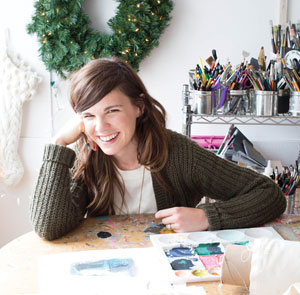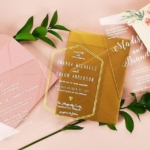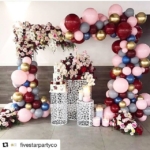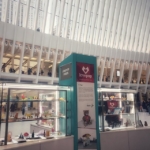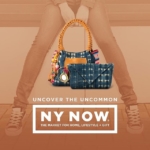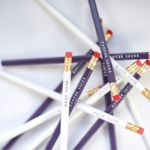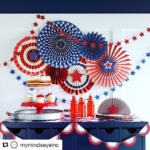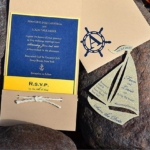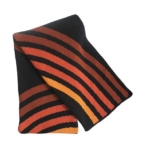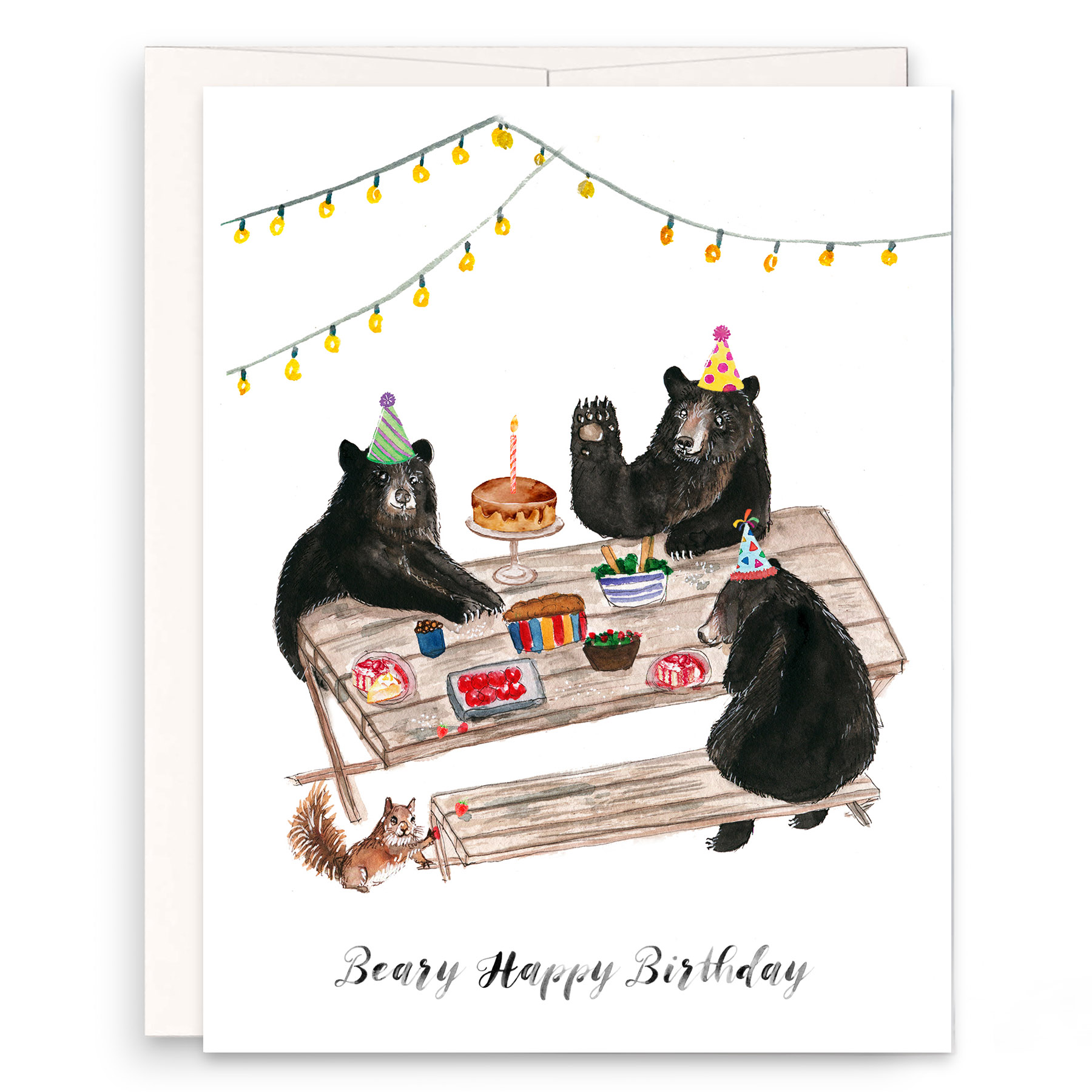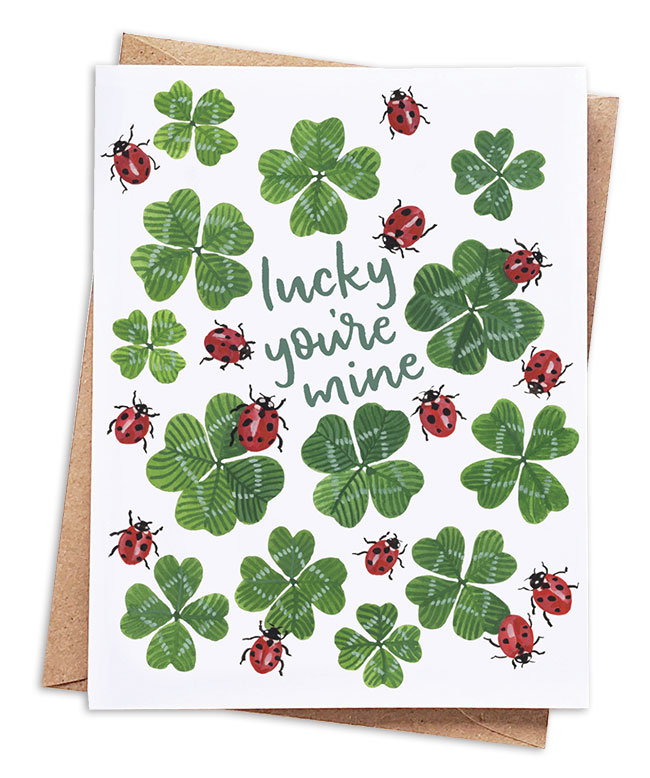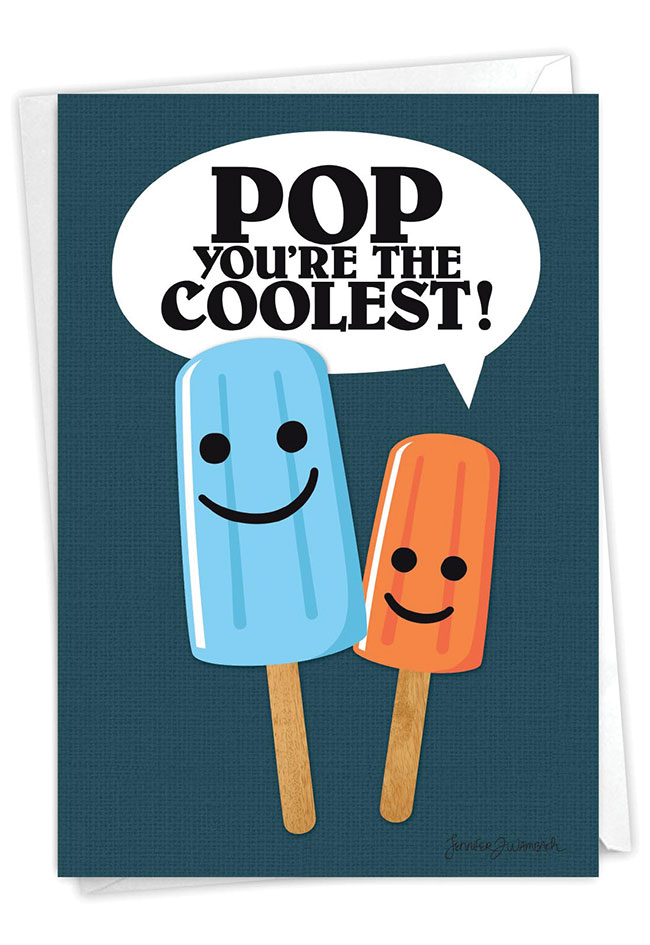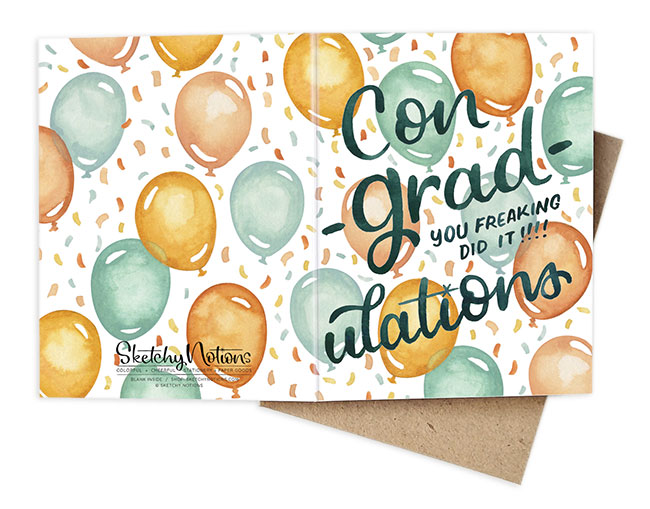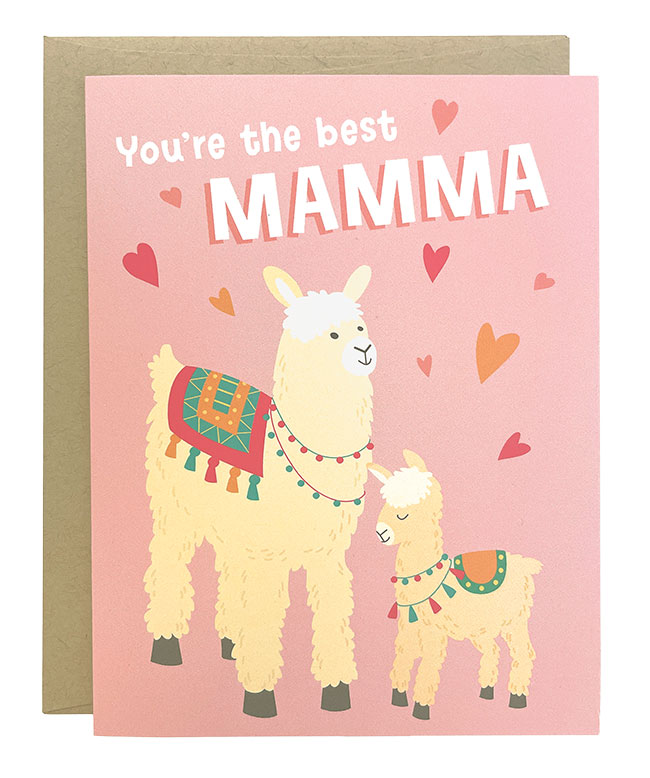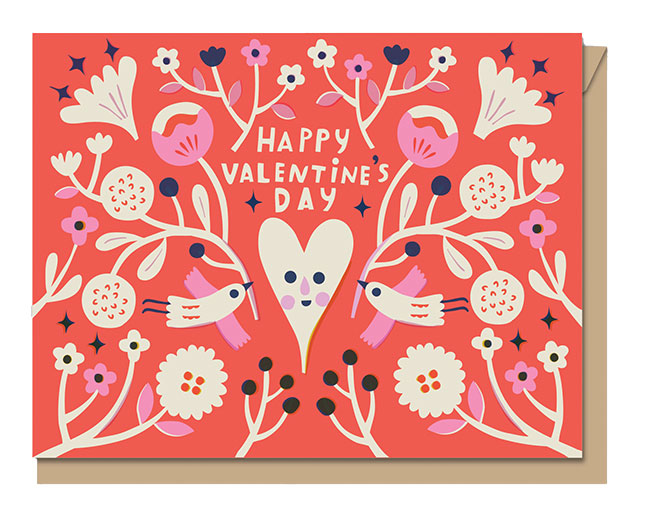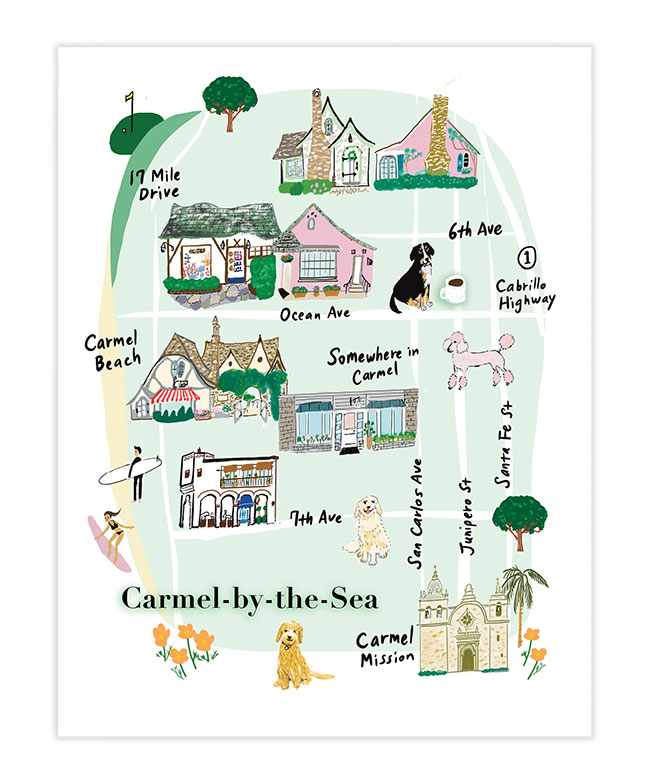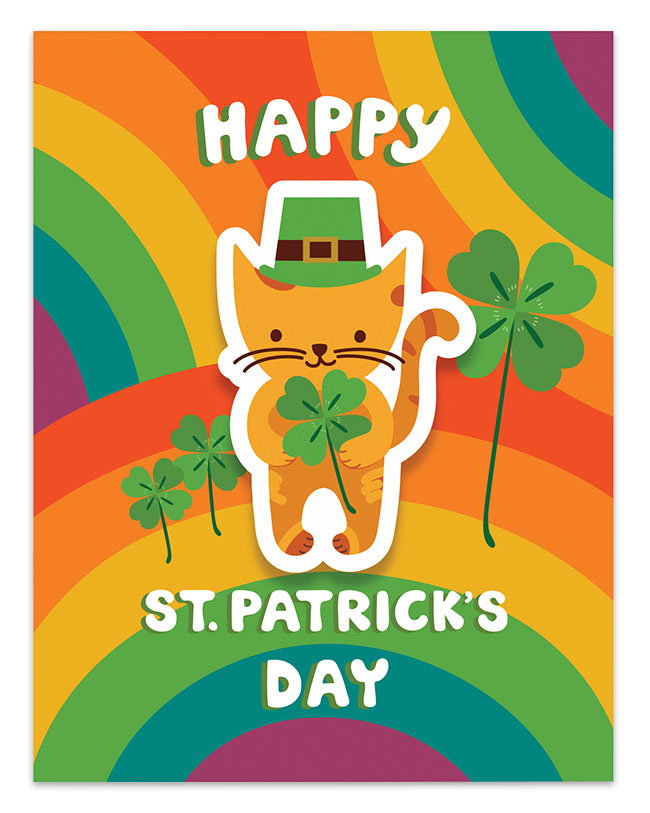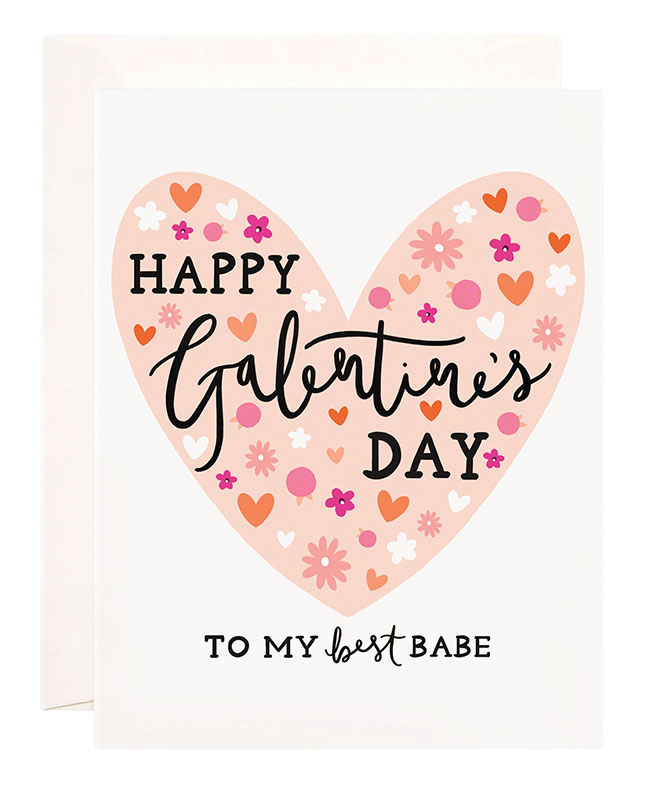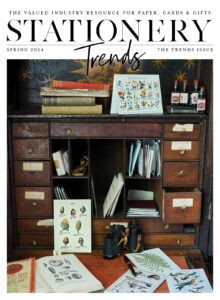Features Industry Profiles
January 7, 2015 •
Meg Gleason
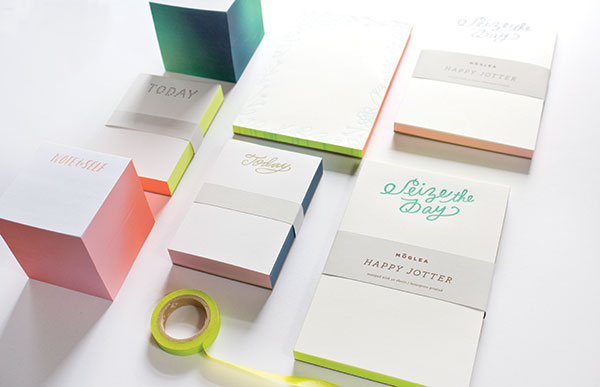
Moglea’s creations are more evocative of an art exhibition than a stationery line
One of the greatest treats at National Stationery Show is a visit to the Moglea booth — that is, if you can wedge your way in through the crowd and find a spot to check out this artful, painterly line.
Launched in the basement of an Iowa farmhouse in 2012, the letterpress line is as wholesome as its Midwestern origins, with all production undertaken in-house in order to infuse each and every piece with an intimate, one-of-a-kind quality. Here the touch of the hand is evident in every dip-dyed, die-cut, edge-painted or watercolored detail.
Even with this slow, meticulous approach, Moglea’s exquisite wares are so in demand that a new studio was just built to accommodate an ambitious expansion. Stationery Trends interviewed Owner and Creative Director Meg Gleason to learn more about Moglea’s growth and plans for the future.
ST: Moglea was launched under the creative direction of you and your husband Chad. How does the division of labor of running the company break down between the two of you?
MG: In the beginning, Chad mainly helped with business decisions and press maintenance. Over the past year, his role in the company has changed significantly. He designed our new studio, helps me oversee our staff and acts as a second art director, giving me valuable feedback on new product designs. We plan to launch another brand eventually outside of stationery, and Chad will be the lead designer on that project.
ST: You’ve mentioned that your line has become “more painterly, an intensely patterned collection with darker colorways.” What inspired you to evolve your style in this direction?
MG: I’ve always enjoyed making simple painted color compositions. They are a sort of creative meditation as I’m trying to develop ideas. Last year, I decided to add them into the line, and we’ve had an excellent response to them.The darker tones of the new collection evolved after exploring new colors for dip dye cards. I had bought some black and dark green dyes, and once I had the dipped samples in view, every card I designed had to be darker in tone to match the new dip dye cards. I’ve always designed cards this way, so they all complement each other and feel cohesive as a family of designs.
ST: Unlike other houses, you never outsource production. Why is this practice important to you?
MG: I’ve always loved the crafted feel of a hand-made card, and I want to keep our cards feeling one-of-a-kind. I love these simple techniques, (that) while time-consuming, make Moglea unique. It’s especially fun for Chad and I to figure out how to do these processes in large quantities. My favorite days in the studio are when each staff member is holding a paintbrush and working together to paint our watercolor cards.
ST: You’ve recently begun the process of moving your business out of your farmhouse as you’ve begun constructing a studio on your facility. Can you tell us a little bit about the space? Other than being able to separate your home life from your business life, what else will it enable you to do that you weren’t able to do before?
MG: We are still finishing construction on the studio and plan to move in this winter. We started our business in the basement of our farm house in 2012. Since (starting our business) we’ve added presses, staff and even two children, and we don’t have enough space to accommodate additional staff in our home. We designed the studio to be quite multi-functional. It is large enough to accommodate growth for additional presses and staff, has a furniture studio, two small apartments and a large kitchen for cooking classes. The new studio will allow us to teach workshops, make furniture prototypes and house interns or staff. We wanted the studio to be a creative and inviting space we can share with others. We hope for it to be a creative retreat for many.
The Fine Print
ST: What tend to be your biggest inspirations?
MG: Fashion and architecture are always inspiring to me. I also have a collection of vintage art history books and children’s books that I look through often for inspiration.
ST: Can you describe a typical day?
MG: I wake up around 6 to have time with Chad before our children wake at 7. Once they are ready for their day, I either drop them off at daycare or they stay at home with me. Our staff arrives around 8, and I typically spend the first couple hours of my workday helping to guide their projects. The rest of the day is usually spent managing and helping with some aspect of production, whether it be ordering supplies or printing. I really only paint or design new products a month or two out of the year. Since we’ve added extra staff, I’m finally more free to devote extra time to designing new products.
ST: Does actually running a paper line differ from how you first envisioned it? If so, how?
MG: We didn’t really put much thought into what running a paper line would be like when we launched, so every day is a fun adventure. Having employees has been more rewarding than I would have ever imagined. We love sharing this company with others, especially providing a creative workplace in a rural area where there are very few creative career opportunities.
ST: What advice would you give to new or young invitation designers or stationery companies looking for success?
MG: Take time to plan your product line so you can launch things right. I spent a couple years figuring out what our brand would be before and refining designs before I jumped into wholesale, and I feel like that was to our advantage.Don’t be afraid to ask for help. This industry is so generous to help others. We’ve had many individuals help us and coach us as we were getting started, and these simple gestures have blessed us abundantly.
ST: Where would you like Moglea to be in five years?
MG: We’d like to expand further into the gift and party categories and maybe add a small wedding line next year. Chad and I want to work on another design brand within the next couple years as well.
ST: What consumer, lifestyle or industry trends do you currently find affecting your work?
MG: My hope is that there is a trend for how to make writing letters easier to do and happen more often. I still struggle with sitting down and writing notes, and I hope to design more products to make writing letters easy and exciting.
ST: What other stationery designers or companies do you admire and why?
MG: I really admire Schoolhouse Electric. They fabricate and curate a beautiful collection of products that are always beautifully packaged and branded. For stationery, I think Sideshow Press makes amazing products with gorgeous packaging. It’s fun when companies continue to surprise and excite you with unique products.
Meg at a Glance
Q. If you could travel through time and space and land anywhere you desire, where and when would it be?
A. We visited the Mediterranean this past summer, and after exploring many archeological ruins, it would be amazing to see ancient Athens, Ephesus and other cities when they were in their prime under the Roman Empire.
Q. How would you define your signature style?
A. My style is bright, colorful and intensely patterned. Our Letterquette stationery sets always feel like our most unique stationery pieces, and they are my most favorite items to design.
Q. What’s new in your line?
A. We’ve launched sticky note cubes, smaller jotters and complex floral die-cut cards.
Q. What one design or product has turned out to be really hot and why?
A. Our sticky note cubes have sold quite well. I think there are very few options for high-end sticky notes on the market right now, and it’s been fun to see the positive response to them.
Q. Obviously any aesthetic changes over time. Which grouping in your current line do you feel reflects the overall direction of your line?
A. Our newest darker pigment dip dye cards (our copper birthday card) are a direction I want to explore further. It was also fun to create the floral die-cut cards and I want to add more complex processes and folds to our card designs.
Q. Do you have a personal favorite from your offerings?
A. From a function perspective, I love our mini-jotter pads. I use the Today pad every day for my daily list and I feel like it is one of the more useful products I’ve designed. It’s inspired me to explore how I can design more functional products for daily use. From a design perspective, our Outlined Thanks card is one of my current favorites.
Q. If you couldn’t do this, what would you do instead?
A. I love simply making things. If I didn’t make paper goods, I would probably explore making textiles or ceramics, or simply just art pieces.
— By Sarah Schwartz, editor


